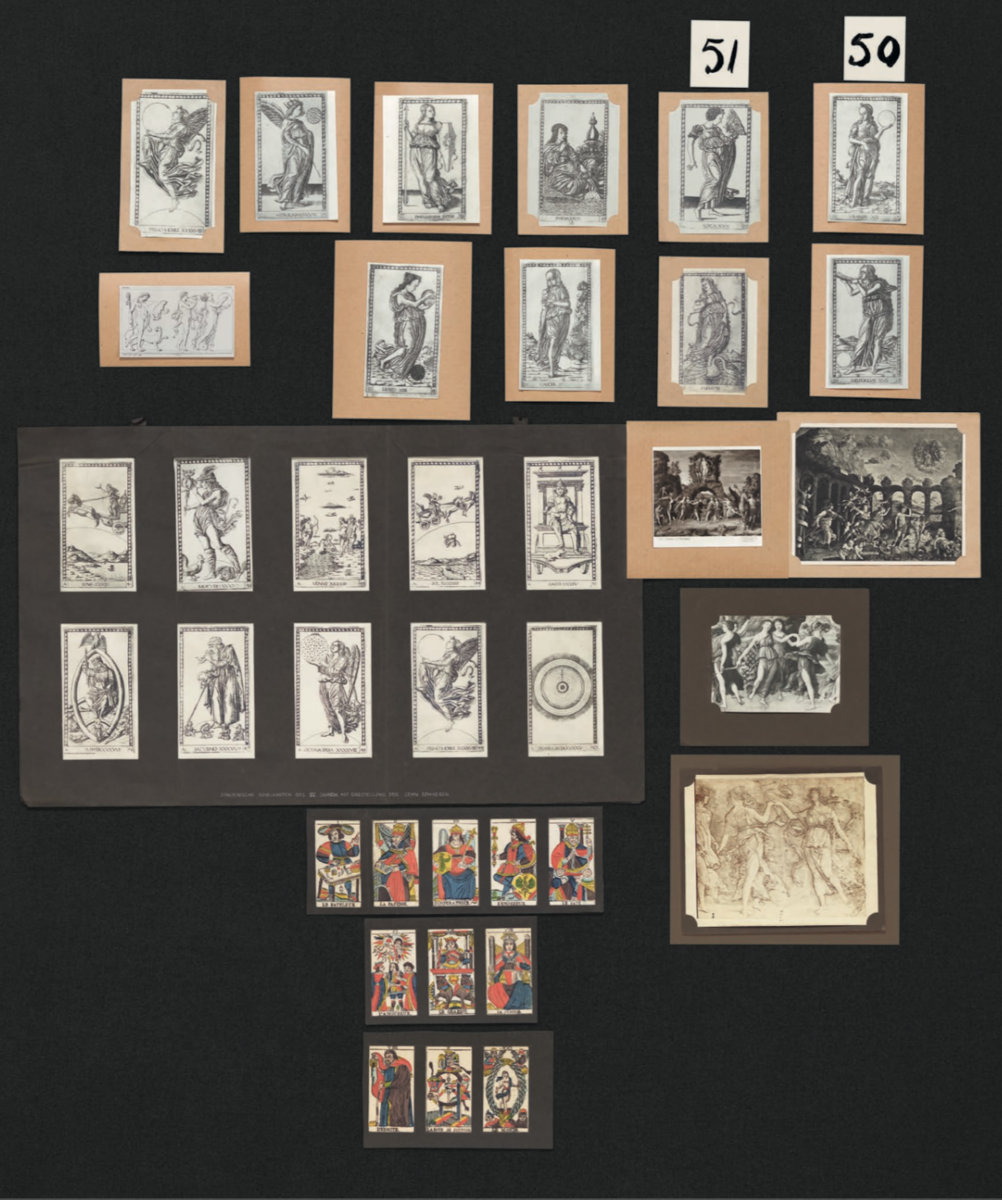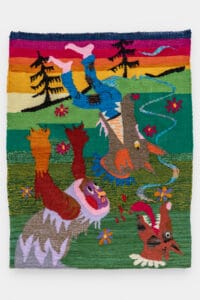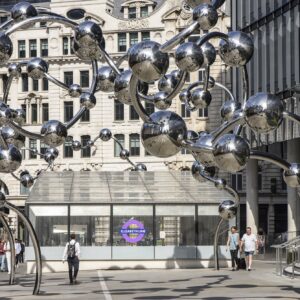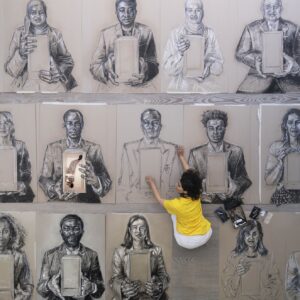The Warburg Institute in London, one of the world’s leading centres for the study of art and culture, will launch a dynamic programme of public exhibitions and events in a series of new spaces, including a dramatic 140-seat auditorium, a state-of-the-art centre for special collections and the Institute’s first gallery – on 1st October 2024.

Following the Warburg Renaissance project, a major transformation of the Institute led by Stirling Prize-winning architect Haworth Tompkins, the expanded programmes will include Fellowships for practitioners-in-residence and commissions for contemporary artists, writers and thinkers. It restores the Institute’s original emphasis on discovery, display and debate, and opens the doors of the Institute to new publics and partners.
The Warburg Renaissance has been designed to put art at the heart of the Institute. After six years of planning and two years of construction, we are looking forward to sharing the Warburg’s spaces, collections and programmes.
Bill Sherman, Director, Warburg Institute,
The Warburg’s new programme will see the Institute’s collections and unique lens on cultural history encounter the landscape of contemporary arts and ideas at its home in Bloomsbury for the first time. Through the programme, we hope to share the Warburg’s mission to chart the movement of images and culture through time with new audiences and participants.
Matthew Harle, Curator of Artistic Programmes, Warburg Institute,
The 2024 / 2025 programme highlights include:
Memory & Migration: The Warburg Institute 1926-2024 – 1st October 2024 – January 2025
A selection of remarkable moments in the Warburg Institute’s intellectual and institutional journey from Hamburg to London will be narrated by artists, writers and historians. The opening display in the Institute’s new Kythera Gallery will include Aby Warburg’s trunk and diaries; original illustrations from Frances Yates’ the Art of Memory; letters from Einstein to Warburg detailing the significance of the architectural ellipse recreated in the ceiling of the new auditorium; images from the Warburg’s Photographic Collection and The Menil Archive of the Image of the Black in Western Art; newly commissioned photographs responding to the transformation by photographer, Tereza ?erve?ová, and Edmund de Waal’s library of exile, featuring a selection of books on exile to provide a place of contemplation and dialogue about memory and migration.
Curated by Matthew Harle & Naomi Pearce
Tarot: Origins & Afterlives – 31st January – 30th April 2025
The inaugural exhibition in the Warburg Institute’s new gallery will survey the history of tarot, exploring the evolution of tarot from a courtly card game in the fifteenth century to its role as a divinatory device and carrier of ancient secrets in the eighteenth and nineteenth centuries, and its more recent contemporary adaptation by countercultural and marginalised communities. As tools to discover the unconscious, sources of artistic inspiration and emblems of counterculture, tarot decks have served as powerful vehicles for fortune, creativity and identity. Aby Warburg was among the first to open up the cards’ complex relations to both astrology and art, devoting a panel of his legendary Bilderatlas Mnemosyne to tarot.

In addition to a wide selection of Warburg’s working materials, the exhibition will feature: The earliest surviving complete deck, the Sola Busca Tarot, on loan for the first time from the Pinacoteca di Brera in Milan (late 15th-century), Fragments of cards belonging to the court of Ludovico il Moro in Milan, when Leonardo da Vinci was active there (c. 1492), Lady Frieda Harris’s original paintings for the Thoth Tarot, designed with the infamous occultist Aleister Crowley (1938-43), A unique collage featuring Etteilla’s entire Livre du Thot tarot (1789), The Rider-Waite deck designed by Pamela Colman Smith (1909), Austin Osman Spare’s experimental tarot (c.1906), Artwork from Suzanne Treister’s Hexen deck (2009-), Ugo Dossi’s virtual reality ‘Tarot Garden’ (2024)
Curated by Jonathan Allen, Martina Mazzotta and Bill Sherman.
Art & The Book May – July 2025
The Summer of 2025 will incorporate an event season and collections display, bringing together the world of art books and artist’s publishing, programmed in partnership with Biblioteka – a public reference library of rare books, zines and periodicals relating to art and architecture housed by the Architectural Association. Uniting the Warburg’s collections with London’s contemporary landscape of artist’s books, events include book fairs, talks and workshops. Art & The Book will take place during the 75th anniversary of former Warburg Director, Sir Ernst Gombrich’s The Story of Art, exploring the legacy of the leading canonical work of art history in the manifold contexts and practices of contemporary art publishing and book-making.
Partnered with Biblioteka
Black Atlas, Edward George September – December 2025
In the Autumn, the Warburg Institute will present Black Atlas, a major new film commission and curated exhibition from the writer, artist and founding-member of the Black Audio Film Collective, Edward George. Black Atlas will draw upon the Warburg’s Menil Archive, a collection of over 40,000 reference photographs of paintings, sculpture, manuscripts, decorative arts, and other objects that document the depictions of people of African descent from antiquity to the civil rights era. Responding to Aby Warburg’s own Bilderatlas and associative methodology, Edward George’s series of critical fictions will span the archive’s images in a new film and unique image-essay displayed in the gallery.Theexhibition will change at regular intervals as George devises new configurations, presenting a kinetic, interpretive visual history of Black figures in art.
Curated by Edward George & Matthew Harle
Assetto Fellowships for Creative Practitioners in Residence
The Warburg Institute’s Assetto Fellowships will host three creative practitioners across the academic year to encourage creative interdisciplinarity across the visual arts, film, photography, music, design, game development and writing, among other fields. Fellows will be required to contribute to the Institute’s public programme of events, exhibitions, publishing and/or digital content. Assetto Practitioners in Residence will be given the time and resources to research and develop their practice in the context of the Institute’s collections, research community and artistic programme with the aim of intersecting Warburg’s unique lens on cultural history with contemporary culture and thinking. The fellowships have been devised to foster a new institutional conviviality where research, curatorship, teaching, and interdisciplinary practice establishes a porous culture across the Institute’s new spaces.
The Warburg Institute, University of London, School of Advanced Study Woburn Square London warburg.sas.ac.uk
About
Founded in Hamburg by the pioneering scholar Aby Warburg (1866-1929), the Warburg Institute, its scholars, books and images were rescued from Nazi Germany and brought to London in 1933. This included the Institute’s legendary library, with its expansive system connecting the textual and the visual, the scientific and the spiritual. It joined the University of London in 1944 and is now part of the School of Advanced Study, the UK’s national centre for the promotion and facilitation of research in the humanities.
The Warburg Institute has served, during a turbulent century, as a creative crucible for scholars, curators and all those whose work sits outside traditional academic structures. Its collections, courses and programmes are devoted to studying the movement of culture across barriers—of time, space and discipline—with a special emphasis on the afterlife of antiquity. It has been home to some of the world’s most influential historians: among the books written by its staff are Frances Yates’s The Art of Memory and Ernst Gombrich’s The Story of Art. Over the last few years, it has become a partner in international exhibitions including the reconstruction of Warburg’s Bilderatlas Mnemosyne at HKW in Berlin and a historic display at the Uffizi in Florence.
Haworth Tompkins is an award-winning, London-based architectural practice formed in 1991 by Graham Haworth and Steve Tompkins. The practice has worked on a broad range of projects, including housing, theatres, schools, offices, factories, and shops, winning over 180 major design awards, including the RIBA Stirling Prize, and AJ100 Practice of the Year 2020 and 2022. In 2019 Haworth Tompkins co-founded the Architects Declare movement in response to the environmental emergency, now over 7000 organisations strong in 29 countries around the world. In the same year the studio became an Employee Ownership Trust and in 2022 a certified B Corporation.
The highly varied portfolio is linked by a set of values rather than a stylistic signature: civility, professional responsibility, and sustainability in the widest sense are the underpinnings of the studio’s creative output. Collaboration with socially driven organisations and clients who share the belief in responsibility to create spaces for people and communities rather than for the profit of the few, has been pivotal to Haworth Tompkins.
Recent projects include The Lightroom Kings Cross (2023), Malmö Stadsteater (2023) sohoplace (2022) Fish Island Village (2022), Punchdrunk (2022), Theatre Royal Drury Lane (2021), Gardner Close, Wanstead for Pocket Living (2021), Kingston School of Art, Kingston University (2019). Current work includes the redevelopment of the Old Press Mill Lane site at Pembroke College, Cambridge, the redevelopment of the Grade I listed De La Warr Pavilion in Bexhill, and the new American Repertory Theater at Harvard University.
Funding The £14.5 million renovation of the Warburg Institute has been enabled both by an investment of £9.5 million from the University of London and by more than £6m of philanthropic donations. The Hamburg-based Hermann Reemtsma Stiftung has been the lead donor and the new auditorium in the courtyard will be named for its founder. Other naming-level gifts include the Kythera Gallery, the Marie-Louise von Motesiczky Teaching Suite, the Wohl Special Collections Reading Room and the Assetto Artistic Fellowships. Major gifts were also provided by the American Friends of the Warburg Institute, the Wolfson Foundation, the Garfield Weston Foundation, the Foyle Foundation, Phillips, Edmund de Waal, Daniel Peltz, Stuart Roden, Erck Rickmers, Axel and Christiane Hansing and Mark Storey.







